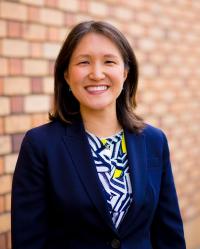The U.S. Department of Education recently announced a notice inviting applications for the Full-Service Community Schools Program to provide high-quality academic, integrated health and social service, and engagement support for all students. The grant program continues to reflect steady increases in the federal appropriations process from an initial $5 million in fiscal year 2009, to $25 million in 2020, $30 million in 2021, $75 million in 2022, and a proposed substantial increase of $468 million in 2023. The exponential growth in investments signals a consistent interest and confidence in community school strategies as a powerful approach to whole-child educational transformation of schools and communities. Similarly, dedicated state funding opportunities in Maryland, New York, and California reflect a growing body of evidence from decades of implementation expertise about how community school strategies—when supported and sustained—can leverage the assets and voices of the full community to support student success.
The Community Schools Forward national task force welcomes this support of community schools as a strategy to increase youth and community voice, ensure rigorous community-connected instruction, extend learning opportunities and improve school climate, health, and mental health, and college and post-secondary student outcomes. The task force recognizes that while funding is necessary to continue to accelerate the growth of community schools, increasing it alone will not directly result in effective community school partnerships and strategies. High-quality technical assistance must be provided to practitioners. The task force project team developed a national needs assessment to gain a clearer picture of what type of community school technical assistance is needed across the country.
What does community school technical assistance entail?
The Children’s Aid National Center for Community Schools (NCCS) is a practice-based technical assistance provider that has supported the startup, scaling, and sustainability of community school initiatives across the country and internationally, NCCS has seen what happens with (and without) strong and consistent guidance and capacity building. We define technical assistance as the process of building the capacity of community school stakeholders to start, scale, and sustain transformational community schools. Informed by a comprehensive needs and assets assessment and guided by a plan jointly developed with the client, technical assistance includes organizing communities of action, facilitating connections, and providing the relevant tools and skills.
In early 2022, in anticipation of technical assistance needs of new and developing community school practitioners, NCCS—in partnership with the Brookings Institution, the Learning Policy Institute, and the Coalition for Community Schools—conducted an assessment of community school practitioners and experts to gauge emerging needs and best practices in implementing community schools and technical assistance. The findings of our inquiry provide important guidance for the Full-Service Community Schools program and other initiatives focused on expanding and deepening effective community school strategies. In our report, “Community Schools Forward: Technical assistance needs assessment,” we summarize the findings of a national study exploring community school technical assistance needs and assets and recommend that technical assistance providers prioritize:
- Model clarity for all stakeholders – ensuring all stakeholders have the same conceptual understanding of community schools and their role within the model.
- Structures and systems for community voices – developing mechanisms that invite democratic processes within a community school.
- Structures and systems for collaborative leadership – systems and processes that reinforce distributed leadership and collaborative decisionmaking.
- Asset-based thinking – cultivating a perspective that focuses on the strengths of the students, families, and community.
- Sustainability – navigating braided funding and “telling the story” to public and private funders in a way that accurately reflects the work; developing a model or network that is supported by the community and leadership, and not vulnerable to leadership changes.
- Reimagining systems for equity – reviewing existing school processes and structures to determine if the current approach is meeting all student, family, and community needs. Changing those systems that are not meeting the needs of all stakeholders.
- Data systems – developing systems for data collection and analysis that capture accurate data that is connected to identified outcomes and is aligned with a logic model.
- Data culture and continuous improvement – creating a positive and collaborative environment where problems can be identified and solved using data and inquiry.
Additionally in our report, practitioners shared the most impactful strategies that community school decisionmakers and partners can prioritize as part of their developmental process.
Strategy 1: Common language and understanding for all stakeholders
The first step toward developing model clarity for community schools is having common language and understanding for all stakeholders in schools, districts, and communities. In a community school, teachers, staff, partners, students, and parents need to know both the shared collective vision and goals of the school, and how they can contribute their expertise and perspectives to co-construct what it will become. Multiple respondents expressed that this initial level-setting helped individual staff across roles and institutions get on the same page.
Strategy 2: Development of advisory and steering committees
Advisory and steering committees guide the work of community schools and intentionally preserve space for community voices. A powerful advisory board can both hold the school accountable and ensure strong bonds with local community members. Advisory committees should evolve from a comprehensive asset and needs assessment during the first year of community school development and represent a diverse group of community stakeholders and leaders. By rooting the needs and assets assessment in community conversations, the resulting strategic plan reflects and prioritizes local knowledge and community wisdom.
Strategy 3: Continuous improvement methodology
Continuous improvement and structured data inquiries are the cornerstones of community schools. One technical assistance provider explained that when helping schools understand the “how” of community schools, it was like cultivating a new way of thinking using data and reflection. Another provider described problem-solving with practitioners to ensure their assets and needs assessment included all stakeholders and engaged a significant majority of the school community. Thus, by setting up teams who are identifying problems and utilizing an improvement methodology such as “plan, do, study, act” cycles or results-based accountability, practitioners can develop systems that use community data and experiences to transform schools.
The recommendations and structures highlighted above and explored in this report are adaptive and complex. Community schools must have model clarity, community voice, and engage in continuous improvement to be holistic, responsive, and innovative. Community school implementation and technical assistance support must be properly funded. As this strategy continues to expand nationally, there will be new entrants adopting the strategy, and existing practitioners who will need support and guidance. Without this support, we risk developing a strategy that is ineffective, transactional, and siloed—as opposed to one that is transformative and community- and student-led.
The Brookings Institution is committed to quality, independence, and impact.
We are supported by a diverse array of funders. In line with our values and policies, each Brookings publication represents the sole views of its author(s).










Commentary
Increased government funding recognizes the need for strong community school technical assistance
August 15, 2022